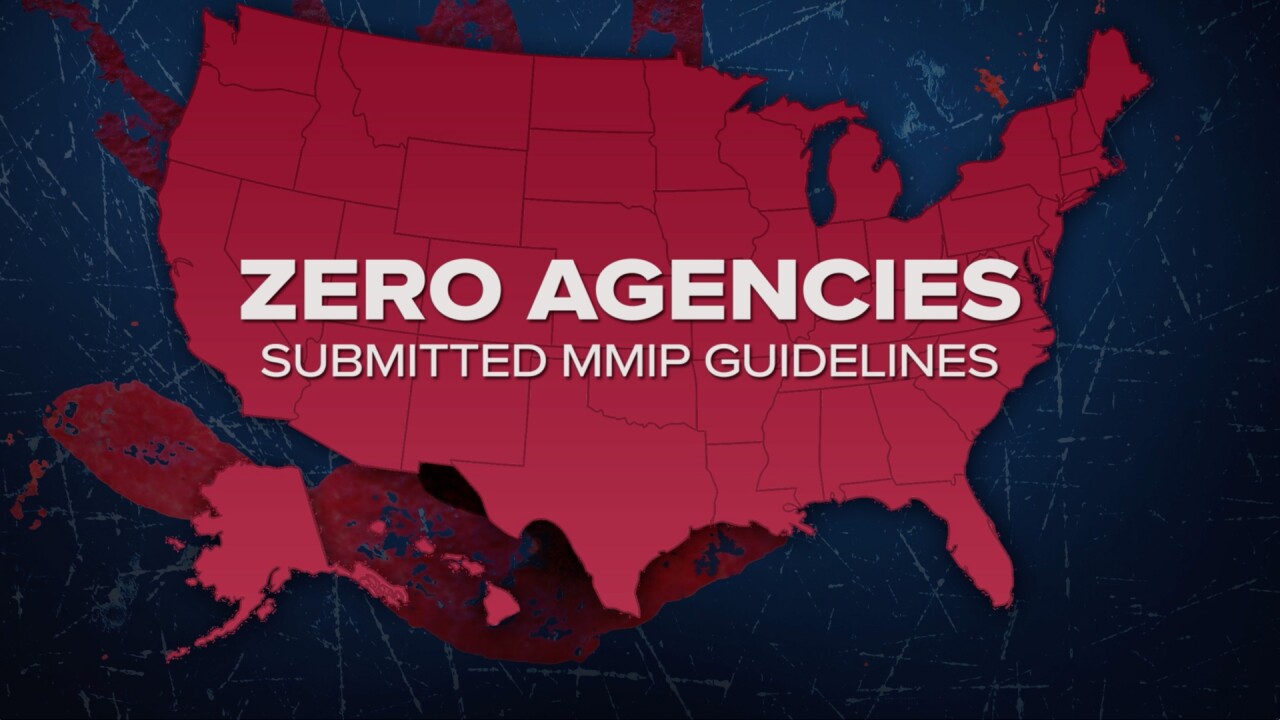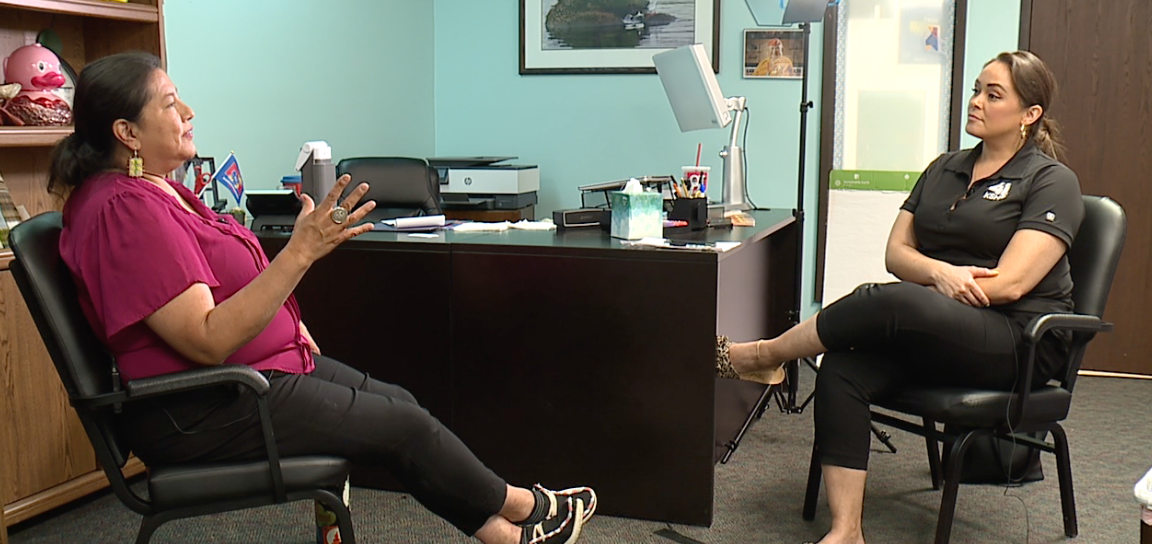KANSAS CITY, Mo. — The KSHB 41 I-Team first told you about the disappearance of 17-year-old Quana Big Spring and how her case highlights the national MMIP crisis — Missing and Murdered Indigenous People — here in our community in October.
RELATED: Quana's Story | National Missing and Murdered Indigenous Peoples crisis unfolding in Kansas City
Note: When we started putting this follow-up piece together, Quana was back at home with her family. Right before we finished this story, the I-Team learned Quana is missing again.

This is the third time she's gone missing. Quana was out for a walk on the evening of Oct. 30 and never came home.
She has specific mental health and medical needs, and her family is concerned for her safety. Anyone who’s seen her should call Belton police at 816-331-1500.
As investigative reporter Sarah Plake and investigative producer Lisa McCormick looked into Quana’s case, they discovered confusion and mistrust about a piece of legislation, Savanna’s Act, designed to improve law enforcement’s response to MMIP cases.
Carole Cadue-Blackwood, social worker and case manager for the Kansas City Indian Center, expected law enforcement — or any official agency — would call the center for assistance and collaboration when Quana disappeared, which is in the spirit of Savanna’s Act.
But Cadue-Blackwood said she never got a call, despite her being a recognized point of contact for the Department of Justice.
“It’s a quiet crisis, and I feel frustrated — we’re invisible,” Cadue-Blackwood told the I-Team.
"Little or no communication"
When Cadue-Blackwood heard about Quana’s disappearance, she felt an instant connection to the Belton teen.
“It hurts me. This is somebody's daughter, somebody's grandchild, niece,” Cadue-Blackwood said. “I want to know just when and where she fell through the cracks.”
Quana disappeared from her Belton home in May for the second time in two years. In both cases, older men preyed on the vulnerabilities of the teenager who struggles with physical and mental health issues.

She escaped in July from an older man she said assaulted her.
“I love her dearly,” Collette Big Spring, Quana’s mom, told the I-Team over the summer. “I just want her safe.”
Collette said she's aware her daughter and all Native American women are at a heightened risk of experiencing violence, an epidemic often referred to as the MMIP — Missing and Murdered Indigenous People — crisis.
“We fail with missing Indigenous women,” Collette said.
Cadue-Blackwood agreed. As a leading advocate in the Native community, she said the Belton Police Department should have notified her about Quana’s disappearance.
“This office was not contacted,” Cadue-Blackwood said. “This most recent case of Quana Big Spring shows that there's little or no communication.”

The KC Indian Center, Cadue-Blackwood said, is the only social services agency for Native American people in the area. It’s one of 41 Urban Indian Organizations in the country and a valuable resource if Native people go missing or are murdered.
“I don't want to sit here and wait for a body,” Cadue-Blackwood said. “No. I want to be contacted the moment when they go missing.”
She expected reporting and communication in MMIP cases, like Quana’s, would improve after federal lawmakers passed a bill in 2020 called Savanna’s Act.
It was named after 22-year-old Savanna LaFontaine-Greywind, a member of North Dakota’s Spirit Lake Nation, who was murdered in August 2017. She was eight months pregnant. Her baby survived.
North Dakota Congressman Kelly Armstrong told a House Judiciary Committee in March 2020 that Savanna’s Act would rectify the historical lack of coordination, record-keeping and communication between agencies in MMIP cases.
“Savanna’s murder brought to light that data on missing and murdered Indigenous people — women and girls, in particular — is scattered around government agencies or is completely non-existent. Savanna’s Act would address this issue,” Armstrong said.
Having pushed and lobbied for the bill, Cadue-Blackwood celebrated here at home.
“I was like, ‘Thank god, something’s being done,’” she said.
But her excitement quickly faded. Cadue-Blackwood said it was “a hollow celebration.”
No requirements in Savanna's Act
Cadue-Blackwood became the local MMIP liaison for the Department of Justice after Savanna’s Act passed. But as Quana’s case illustrates, she said nothing has changed in the way law enforcement handles MMIP cases.
“And I'm frustrated today because nothing is being done," Cadue-Blackwood said. "And if there is, I don't hear about it because I'm not being contacted."
We learned she’s not being contacted because Savanna’s Act does not require law enforcement to notify Urban Indian Organizations, like the KC Indian Center, in MMIP cases.
Cadue-Blackwood was shocked.
“I would like to see, down the road, someone being educated enough to say, ‘Okay, this is a Native American, this is where Savanna’s Act would apply, we’re going to call the liaison for MMIP,’” Cadue-Blackwood said.
The I-Team also learned no law enforcement agencies in Missouri or Kansas have submitted guidelines to the DOJ about how they would respond to MMIP cases. It’s not required; it’s voluntary under Savanna’s Act.
Surprisingly, we discovered not one law enforcement agency in the country has submitted any MMIP guidelines to the DOJ.

We followed up with Cadue-Blackwood again to share our findings. She said it sounds like she has a lot more work to do.
“But, again, it’s a lot of emotional, physical labor on people like me — people who actually care, who pushed and pushed and pushed, got this law established, and nothing happened,” Cadue-Blackwood said.
Who's in charge of the Savanna's Act rollout?
The Kansas City-area DOJ office said it consults with the Kansas City Indian Center about MMIP cases. Cadue-Blackwood said it’s happened once, and that was about Lakota Renville, a 22-year-old Native American woman who was brutally murdered in Independence in 2005.

Her case is still unsolved.
The Indian Center held a memorial in October on the 18-year anniversary of her murder.

Executive Director Gaylene Crouser still has hope Renville’s murder will be solved, but she was astonished when we shared our findings about the loopholes in Savanna’s Act.
“Sadness, really, because so many of the acts that pertain to us are like that, they just don't have any teeth,” Crouser said.
So, who is responsible for ensuring local law enforcement agencies know about Savanna’s Act?
A DOJ spokesman said those discussions would “normally be happening at the district level where there is regular contact between U.S. Attorneys’ Offices and state, local and Tribal agencies.”
In response, Cadue-Blackwood said, “This wait-and-see approach doesn’t work, it hasn’t worked."
Although MMIP cases are rare in this area, the response to Quana’s worries the Indian Center about how future cases might be handled and how any previous cases were handled.
“It’s not going to work until the local police get proper training, until there’s communication between the federal government, the state and the local,” Cadue-Blackwood said. “What is the cost of one life?”
Breakdowns in the system
Cadue-Blackwood said to this day, the Belton Police Department hasn’t contacted her about any of Quana’s missing persons cases.
She said she could try to contact Belton, but Savanna’s Act is supposed to provide training to law enforcement on how to enter people into federal databases, such as NamUs, the National Missing and Unidentified Persons System.
When she went missing in May, Belton police put Quana in the state database and posted an advisory on its Facebook, but her name wasn't entered into NamUs until a month later.
MMIP cases aren't kept in one central database. Missing persons sites like NamUs and NCMEC, the FBI, state bureaus of investigation, state highway patrols, individual police departments and the Bureau of Indian Affairs all have differing stats.
The Bureau of Indian Affairs estimates there are approximately 4,200 unsolved MMIP cases in the United States.
Quana was listed as a runaway all three times she’s gone missing.
Out of the nearly 3,000 missing Native American children reported to NCMEC from 2012-2021, 90% were labeled as "endangered runaways."
Cadue-Blackwood said such a label affects how law enforcement and the public view these kids.
“Just educate yourself. And don't victim blame with any person who's missing,” she said.

The Sovereign Bodies Institute, a grassroots organization working to build the most comprehensive MMIP database to date, found that young Native people who run away multiple times tend to be “impacted by the child welfare and juvenile justice systems.” These children are more susceptible to being victims of violence, trafficking and sexual exploitation later in life.
Another federal law, the Not Invisible Act, was signed into law in 2020. It aims to develop recommendations on actions the federal government can take to address violent crime against Indigenous people and the MMIP crisis.
On Nov. 1, the Not Invisible Act Commission submitted its recommendations to the federal government, which must respond within 90 days.
Moving forward
The I-Team will continue to follow Quana’s case and the MMIP issue as a whole.
For an upcoming story, the I-Team took an in-depth look at a new Kansas law that offers free training for law enforcement on how to investigate MMIP cases.
We reached out to more than 300 agencies in the state to see who’s aware of it. You’ll hear why our findings have the bill’s sponsor saying she has a lot more work to do.
—




